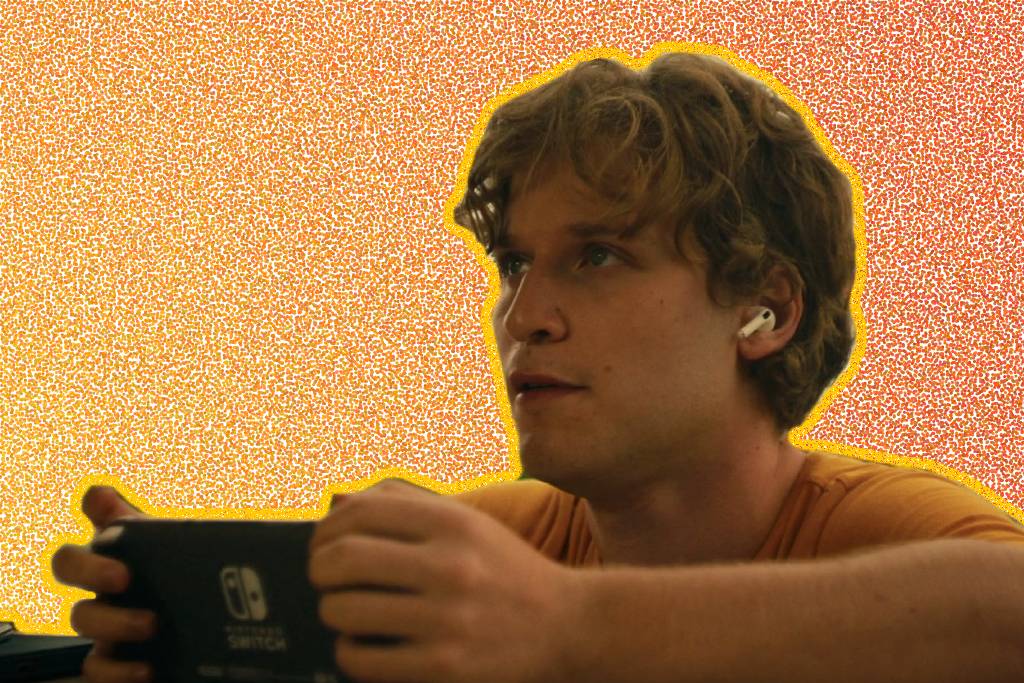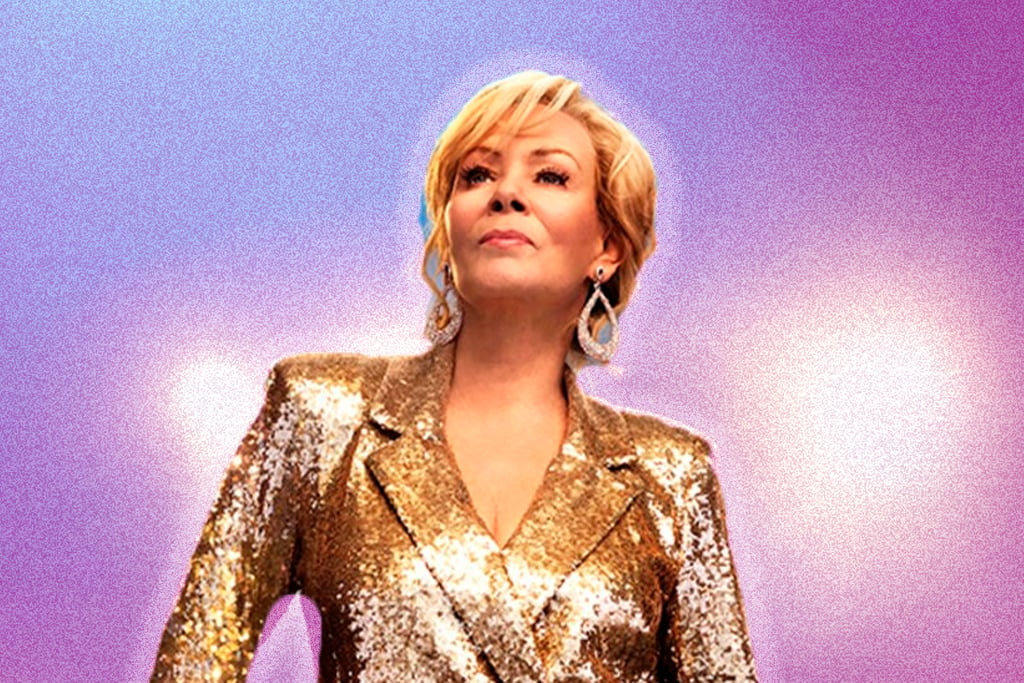Unpacking The Strange, Final Scene Of ‘The White Lotus’
Quinn's final scene cuts to one of the core questions of 'The White Lotus': is white privilege ever harmless, or is it violent by default?

Taking inspiration from Big Little Lies, HBO’s latest prestige drama The White Lotus opened by teasing a death, with insufferable ‘baby-man’ Shane (Jake Lacy) waiting to board his flight home from his honeymoon in Hawaii alone as human remains are freighted on-board.
— Warning: Spoilers ahead for The White Lotus. —
Armond (Murray Bartlett), the Australian manager of the show’s titular resort, ends up in the plywood box, stabbed by Shane when mistaken for a thief in his hotel room. Despite Bartlett being a stand-out among a stacked cast, it lacks any true emotional punch — it’s just a device.
In an interview with Vulture writer Kathryn VanArendonk, The White Lotus creator, and sole writer and director Mike White admit having a death loom over the six episodes was purely a cynical hook, given that his previous show Enlightened struggled to draw in viewers.
Armond’s employers are equally callous. In the show’s penultimate scene the morning after his death, a replacement manager waves at a new boat of VIP vacationers, standing on the shoreline alongside Armond’s co-workers, spa manager Belinda (Natasha Rockwell) and Dillion (Lukas Gage), who aren’t given the day off to mourn.
For the hotel, the death is an annoyance; for The White Lotus, it’s just a small bloodstain against the continued colonial violence that’s hidden to uphold Hawaii as an idyllic escape. The luxury resort’s services on unceded land must go on.
It would make a depressing, poignant final shot. Instead, the show’s last seconds instead go to chronic masturbator, gamer and ‘T-shirt-while-swimming’ teenager Quinn Mossbacher (Fred Hechinger), as he rows into the horizon with a team of friendly, buff Hawaiian men.
He has just abandoned his family at the airport, escaping to follow his days-old dream — an impractical fantasy that clashes completely with the show’s sardonic tone. White admits that the ending is partially his own wish fulfillment, telling Vulture that Quinn is The White Lotus character he most relates to.
“I’m not necessarily fantasizing about paddling to Fiji,” he says, “but being somewhere where I’m free from my devices, free of the discourse, free of all the conversations that he’s experiencing at dinner between his mom and his sister — I want to check out. Let me out of this.”
As a viewer, it’s a disorientating end, belonging to another show (namely The O.C., as sailing into the horizon is literally how Seth Cohen ends Season 1). Then again, a rich white boy living out his fantasy life in a colonial ‘paradise’ with no need to worry about logistics is, in fact, depressingly realistic. Whether Quinn’s happy ending — arguably the only happy ending in the show — hurts anyone cuts to one of the core questions of The White Lotus: is white privilege ever harmless, or is it violent by default?
“What Do You Stand For?”
The White Lotus has been overwhelmingly celebrated as a searing satire of wealth, whiteness and privilege, led by career-defining performances by its cast — specifically, Bartlett, Jennifer Coolidge, and Euphoria star Sydney Sweeney.
Across its six-week airing, multiple alignment charts went viral and inspired articles, as viewers bickered over who’s chaotic good and lawful evil. Anyone who’s watched Mike’s Enlightened knows his characters are ever-shifting: that’s to say, they’re treated like people, multi-faceted and unable to be placed on a chart sheet originally created for Dungeons & Dragons.
i tried to fix the white lotus alignment chart pic.twitter.com/6Enu2jGTVM
— Casey Johnston (@caseyjohnston) August 3, 2021
— eric eidelstein (@ericeidelstein) August 1, 2021
There is no clear villain (newlywed Shane comes close), though there are clear victims: the hotel workers of colour Belinda, Kai (Kekoa Scott Kekumano) and Lani (Jolene Purdi). They are discarded by either the show’s characters (Belinda) or its script, with Kai’s jail time and Lani’s traumatic labour taking place off-screen.
The divide is clearly intentional, but as the show aired over six weeks, predominantly BIPOC critics questioned what purpose it serves. Observer critic Kyle Turner writes that the show’s “not really about the ones most at risk or made vulnerable by that power inequity” — it’s too emotionally invested in its white characters (ie. most of them) to provide a true satire.
Look at the show’s logline, and the frustration is more than fair: wealthy white Americans arrive for a week at the show’s titular Hawaiian resort, struggle to relax, and then leave largely unscathed, even the one who kills someone.
Is white privilege ever harmless, or is it violent by default?
There is little payoff at the end of The White Lotus. It’s not the power disruption many hoped for, though none was promised. Anyone that was waiting for spa-worker Belinda or Olivia Mossbacher’s (Sweeney) college friend Paula (Brittany O’Grady) to triumph would be disappointed by the show’s finale.
White acknowledges the limits of the show in his Vulture interview. As a critique of whiteness and privilege that still centres whiteness, it protects itself from criticism by being self-reflexive, just as White ‘acknowledging’ the limits protects himself.
He is seemingly aware of this too, and his anxiety about where he stands — and, to quote Paula, ‘what he stands for’ — as Mike White, white male creator of The White Lotus, seeps through the show. It’s how Quinn ends up taking its end.
One And A Half Men
Of the holidayers The White Lotus focuses on, Quinn is the quietest. He spends most of the first few episodes swapping between his phone, laptop and Switch, and is forced by his older sister Olivia (Sweeney) to sleep in the windowless kitchen while she and Paula take the suite’s living room.
It is hard to know what the show is doing with the straight white anti-social gamer. In the first few episodes, Quinn has a dopey menace to him, aided by an overhang from Hechinger’s role in The Woman In The Window. His dad Mark (Steve Zahn) spends most of their holiday trying to connect to Quinn and establish himself as a role model, both concerned about his son’s anti-social behaviour and his own irrelevance. Mark has no role in his family, as his wife Nicole (Connie Britton) is the provider, a girlboss CFO of a search engine company.
As Nicole puts it, they’re “alienated from the culture right now”. The White Lotus agrees with both Nicole’s sympathy and Olivia’s stance of ‘re-centring the narrative’. But both White and Olivia are resistant to actually abdicating power. If they did, neither would exist in any comparable form to their current selves. It’s easier to divorce yourself from capitalism when you’ve been birthed into wealth; it’s impossible for The White Lotus to be the same show that’s celebrated without white people at its centre.
Or, as Mark puts it at breakfast, “No one cedes their privilege — that’s absurd. It goes against human nature”. In the Vulture interview, White admits that like Mark, he has had to realise, even as a gay white man, that he has gone from “one of the good guys” to a symbolic Goliath. Struggling to accept it, Mark projects onto his son’s screen addiction, a stand-in for being the bystander instead of the protagonist. Olivia also projects onto Quinn, acting as if her bullying is a political rejection of straight white males.
Her loud criticisms of her family’s wealth are an attempt to scrub her privilege clean, which Paula grows increasingly frustrated with as their hollowness becomes clear. When Paula walks away during a heated dinner debate on privilege and power, Olivia does not even consider that she does so in part because her friend used her as a prop (“What do you know about Paula?”) while arguing against her dad.
Quinn’s happy ever after can’t be detached from its colonial echoes, leaving the show with an unsettling aftertaste.
While it’s counter-intuitive to compare Quinn to Paula, the two are both outsiders to the Mossbachers and continually talked about and over.
But despite Nicole’s worries that no company will invest in her son, The White Lotus slowly builds up Quinn’s storyline, after his water-logged devices free him to find nature. Like Mark, we know next to nothing about Paula’s life beyond this holiday, other than she’s Black, has a lot of illnesses, and goes to the same college as Olivia.
It’s interesting, then, that White told VanArendonk that while writing, he tossed up letting Paula, not Quinn, stay in Hawaii: “…[But] I thought it’d be interesting to have a kid who doesn’t have much of a life, and is a creature of this time, have this numinous experience and see going back [to his previous life] as a kind of death.”
And so, Quinn finds hope on a pristine tourist beach. Against the sad future Mark offers (scuba diving in a pool, buying $750,000 bracelets after cheating on your wife, being appreciated only when you beat up another man), the rowing team are positioned as true, noble men who are happy to have an unathletic, awkward white teenager weigh down their boat.
Quinn’s happy ever after can’t be detached from its colonial echoes, leaving the show with an unsettling aftertaste. But the alternative is worse: Paula staying in Hawaii with Kai, a patronising end as two people of colour are suddenly centred to become the bastion of hope. To quote Olivia, “cringe!”.
There’s no satisfying ending to The White Lotus that would avoid the valid criticism surrounding it, as its flaw — of critiquing whiteness from the inside — is the entire show itself. And with another season ordered by HBO, The White Lotus is becoming an anthology series: a new cast, a new hotel. It’s easy to be cynical of the move (remember Big Little Lies‘ second season?), especially as self-reflexive whiteness can only go so far.
In his biggest moment, Quinn explodes as his family debate privilege and worth: “What does it matter what we think? If we do the right things? The wrong things? If we all do the same shit? We’re all still parasites on the Earth….Where does all the pain go?”.
Like a bad massage at a retreat, The White Lotus prods and pokes at the source of pain in hopes of providing a temporary balm. In the finale, Belinda catches herself trying to heal another white woman by politely listening to her problems — if Season 2 sees The White Lotus repeat itself, you can’t blame people for walking away.
The White Lotus is available to stream on Binge.
Jared Richards is Junkee’s Drag Race recapper, and a freelance crtic for The Guardian, NME, The Big Issue and more. Follow him on Twitter @jrdjms.


